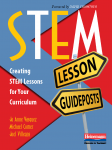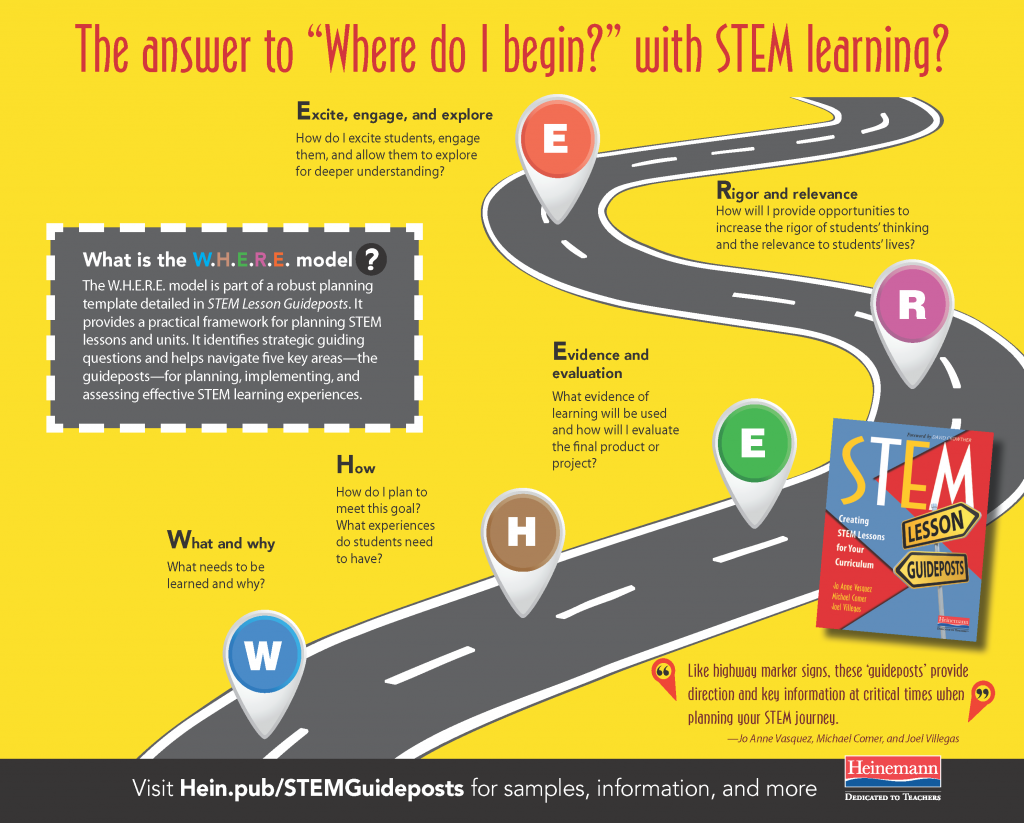
Read a sample from STEM Lesson Guideposts now.
♦ ♦ ♦ ♦
By Jo Anne Vasquez, Michael Comer, and Joel Villegas
Over the last couple of years, we have heard many teachers ask, “Where do I begin?” when it comes to STEM learning. An important first step is determining what STEM education is. Understanding how to craft STEM experiences is a critical second step for bringing STEM into your classroom.
Inspired by this question, we devised the W.H.E.R.E. Model as a guide through the process of creating cohesive and integrated STEM lessons and unit. The image below presents a simple mnemonic that identifies the five essential building blocks of unit development:
We refer to each letter of the W.H.E.R.E. Model as a “guidepost.” Like highway marker signs, the guideposts provide direction and key information at critical times when planning your STEM journey. Each guidepost represents a decision point in the planning process, an opportunity to reflect on the critical ingredients that make for effective instruction.
The W.H.E.R.E. Model is based on current research and best practices for curriculum development that leads to deep student understanding. As described by Jay McTighe and Grant Wiggins in their Understanding by Design Framework (2013), understanding is revealed when students make sense of and transfer their learning through authentic performance tasks.
The authors suggest six facets that serve as indicators of understanding:
-
the capacity to explain
-
the ability to interpret
-
understanding how to apply new knowledge and skills
-
the ability to shift perspective
-
the ability to empathize
-
the ability to self-assess.
An effective STEM unit embodies these six facets as essential goals of its instruction. In our new book, STEM Lesson Guideposts, the W.H.E.R.E. Model is explored in depth, identifying strategic guiding questions and helping you navigate the five key areas—your guideposts—for planning an effective STEM lesson or unit.
 Jo Anne Vasquez is a STEM professional learning provider, Past President of the NSTA, and former classroom teacher who has spent her career promoting integrated, hands-on learning experiences for all students.
Jo Anne Vasquez is a STEM professional learning provider, Past President of the NSTA, and former classroom teacher who has spent her career promoting integrated, hands-on learning experiences for all students.
Michael Comer has been an advocate of improving science education for over 25 years, sharing proven ideas and engaging resources for the betterment of all students.
Joel Villegas has 18 years of experience in education with a focus on STEM integration and professional development. A dynamic presenter, he speaks frequently at both local and national conferences.




